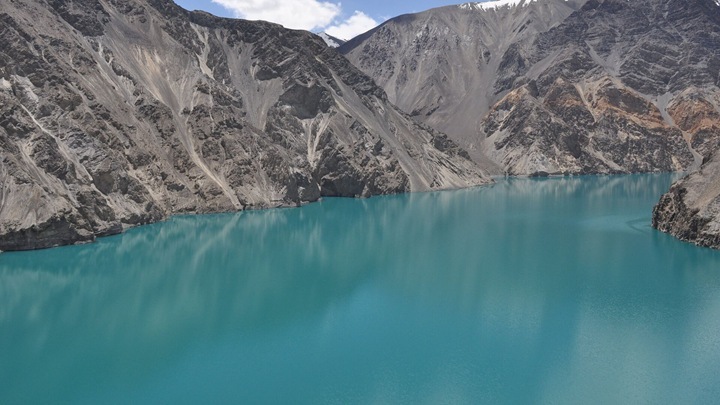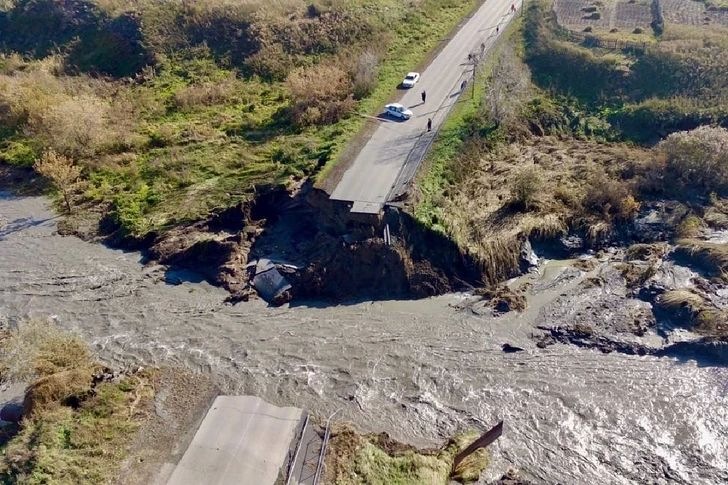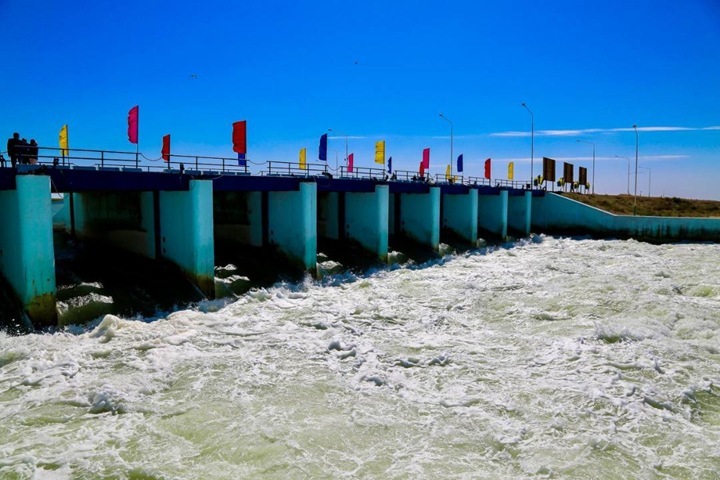Time bomb: Lake Sarez threatens Central Asia
As usual, any shock near the Sarez immediately causes a wave of anxiety — what if it bursts? Should we be afraid of such a catastrophe? Experts are divided in their opinions: some believe that this is impossible, others sound the alarm and offer solutions to the problem.

Sarez Lake is located in the Murghab district of Tajikistan, its length is about 70 km, the maximum measured depth is about 500 m, the volume of water is more than 17 cubic km.
Fears about a possible breakthrough of Lake Sarez as a result of an earthquake are groundless, said Sobit Negmatullaev, head of the Geophysical Service of the Academy of Sciences of Tajikistan.
The scientist notes that some experts are talking about the threat of a breakthrough of the Usoysky blockage (the dam of Lake Sarez) as a result of destructive tremors, which can lead to great destruction on the territory of Tajikistan, Afghanistan, as well as Uzbekistan and Turkmenistan.
According to Negmatullaev, these concerns are absolutely groundless. He noted that the territory of Lake Sarez is under constant supervision of specialists, and there is no cause for concern.
The same was said by the ex-head of the Committee on Emergency Situations and Civil Defense Rustam Nazarzoda. He noted that the lake is under constant supervision of Tajik specialists.
“Sleep well. There are no major changes in Sarez,” Nazarzoda emphasized.
According to him, a modern early warning system was installed at Lake Sarezky, a system for monitoring all changes that occur in the lake area, including at its bottom.
In the risk zone 6 million
Meanwhile, some researchers believe that the lake still poses a danger — and not only for the nearest settlements, but also for the entire region. There is a hypothesis that in the event of a breakthrough, a huge mass of water will flow through the mudflow almost to the Aral Sea.
…More than 30 years ago, a group of specialists developed a mathematical model using the most modern computers in those years. But as soon as scientists received the first results of the disaster simulation, these results were immediately classified. They were made public only in 2001, and then not completely.
According to the model, approximately 6 million people live in Tajikistan, Uzbekistan, Afghanistan, Turkmenistan and Kazakhstan in the zone of possible flooding. In the lower reaches of the Amu Darya, the water level from the breakthrough will rise slowly, from several hours to 3-4 days. But in the Pamirs and in the Panja Valley, this will be a disaster.
According to scientists, a mud-stone stream with an initial height of about 80 m and a speed of about 100 km/h will pass through the mountain gorge. The stream will demolish not only dwellings, but also bridges and many hydraulic structures in Ganja, flood cemeteries, cattle burial grounds, minefields left over from the war in Afghanistan and Tajikistan.
A huge number of victims, wounded and dead from diseases caused by flooding of territories are predicted. There will be at least a hundred thousand of them.
Experts are concerned
Three years ago, at a round table devoted to the Sarez issue, Doctor of Technical Sciences Yuri Sevenard, a Soviet and Russian hydraulic builder, who in the 60-80 years of the last century led the Nurek Dam, and was also engaged in the construction of a complex of Leningrad flood defenses, spoke on this issue.
Alexander Ryabikin is a Soviet and Russian hydraulic builder, among other things, the former head of the construction of the Sangtuda—1 Dam in Tajikistan, candidate of technical sciences, as well as Andrei Grabatov — in the 1975-1990’s – hydraulic engineer of the design institute “Tajikgiprovodkhoz”, and in 1986-1989, the head of the mathematical modeling group of the consequences of a possible disaster from destruction The Usoysky blockage of the Sarez Lake.
Experts have a question about the possible presence of ice (firn) inclusions in the body of the dam, given the fact that the landslide (during the formation of the Usoysky blockage) occurred in winter, and at this time of year the thickness of the snow cover in these places reaches several meters.
Why is this so important?
According to them, the ice in the body of the blockage is covered with soil and coarse-grained materials, but the water gradually erodes it, subsidence of the soil occurs. And this is a very dangerous phenomenon, because in the event of an earthquake, the crest of the blockage (the dam of Lake Sarez) can drop sharply.
The uncertainty associated with the lack of data on the geological structure of the blockage, the volume of snow and ice in its body makes it impossible to make clear engineering decisions.
In general, experts are confident that the condition of the blockage is causing more and more anxiety every year. And the only solution they see today that will guarantee safety for people living in the Panj and Amu Darya River basins is lowering the water level in the lake by 100-150 m below the existing mark.
How to do it?
According to experts, in the 1980s, engineers studied the issue of lowering the water level in Sarez.
And the first stage of the complex of hydraulic engineering works on Sarez, in theory, should be work to bring the lake to a safe state. To do this, you need to lower the water horizon by about 100, and preferably by 150 m due to filtration through the body of the blockage. And in order to stop the main inflow of water into the lake during the lowering of the water level, it is necessary to divert the Murgab River to the Kakuibey River through a 30-kilometer tunnel, intercepting its channel with a dam in the area where the river flows into the lake.
In addition, it is necessary to use the lowland located below the Usoysky blockage on the Bartang River. According to experts, it will be able to take on almost the entire volume of a catastrophic flood if the blockage breaks.
It will only be necessary to build there — about 60 km below the blockage — a village – a water-proof dam. It will be a kind of trap to intercept a possible catastrophic wave of breakthrough from the lake. The upper reaches of this dam should be able to receive about 7 cubic km of water. In its lower reaches it is possible to build a Dam.
Thus, according to experts, it will be possible to protect 6 million people.
At the same time, experts note that lowering the water in the lake is a primary measure, but not the only one. Along with this, it will be necessary to build a hydroelectric power station in the lower reaches of the Usoysky blockage, which will generate electricity by passing Sarez water through its turbines.
Experts believe that after the implementation of anti—filtration measures, the useful volume of the reservoir into which the lake will turn will be quite significant – 7-8 billion cubic meters. And this is almost twice as much as at the Nurek Dam!
Experts urge the authorities not to take lightly the threat of a breakthrough of Lake Sarez. Moreover, not only the Tajik authorities should be concerned about this problem. And the republic simply will not be able to start work on preventing a catastrophe alone. In their opinion, it is necessary to involve neighboring states as well. No matter how expensive it is to prevent danger, it will cost us many times cheaper to eliminate the consequences of a possible catastrophe.
Sputnik Tajikistan
Original (in Russian): Бомба замедленного действия: озеро Сарез угрожает Центральной Азии


